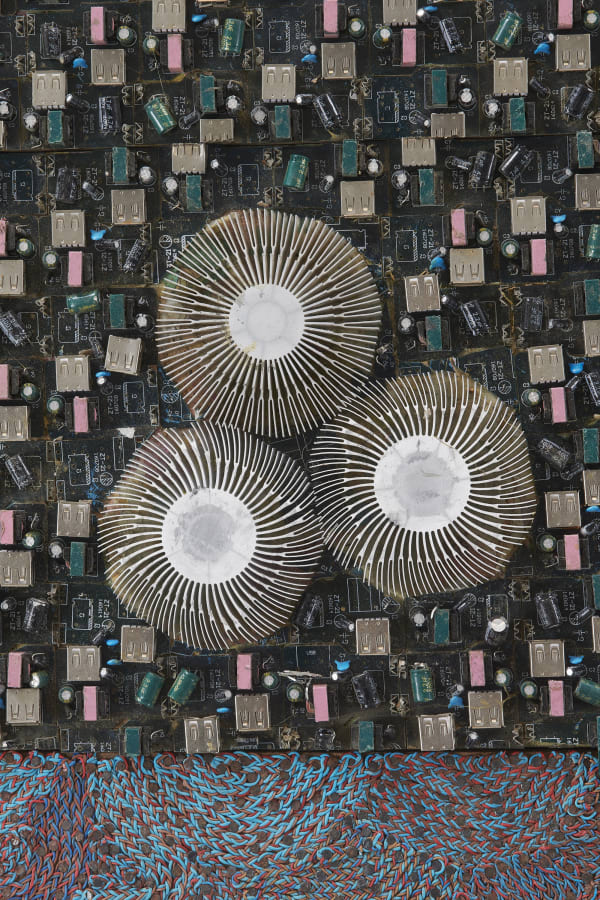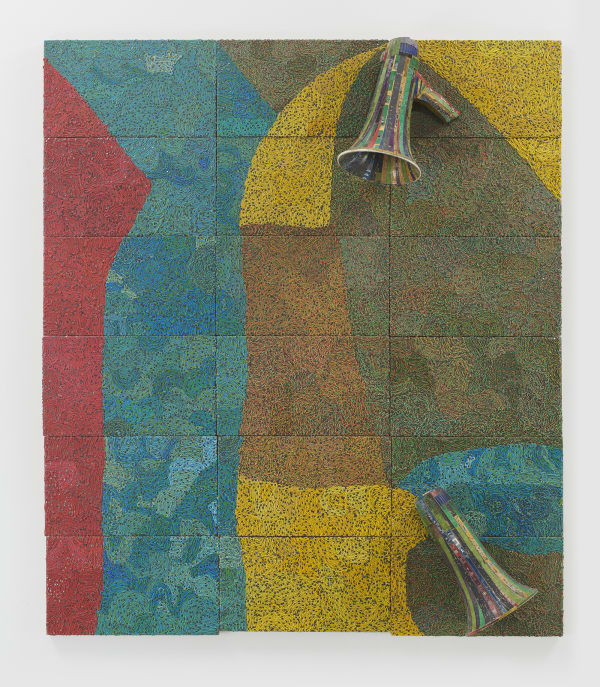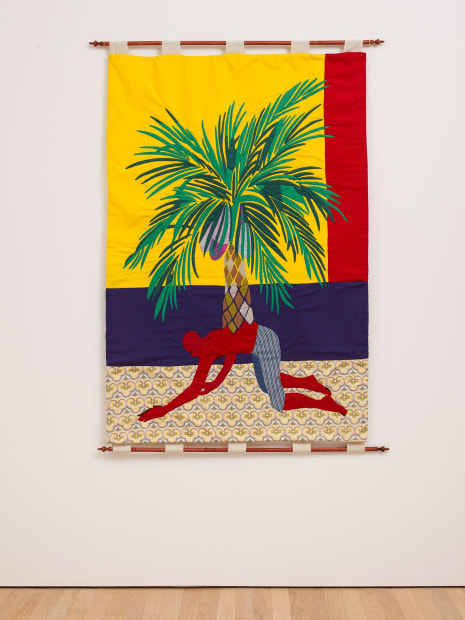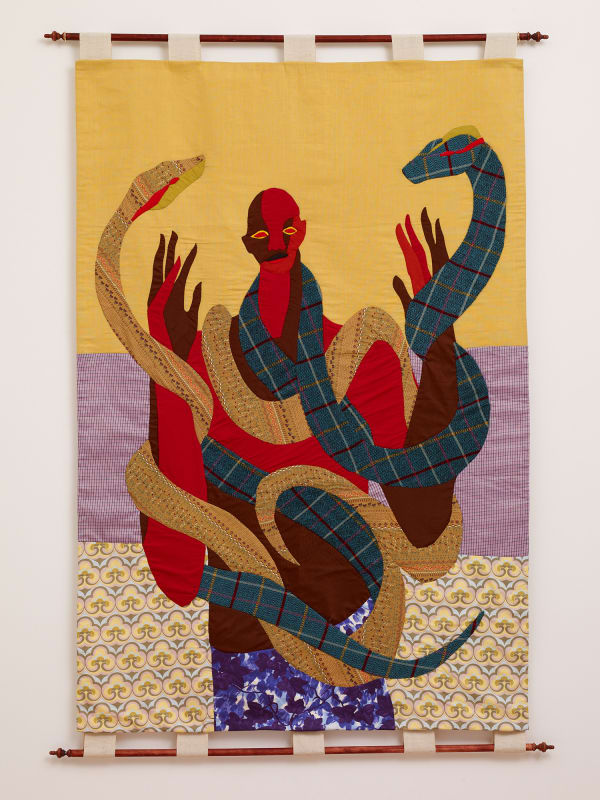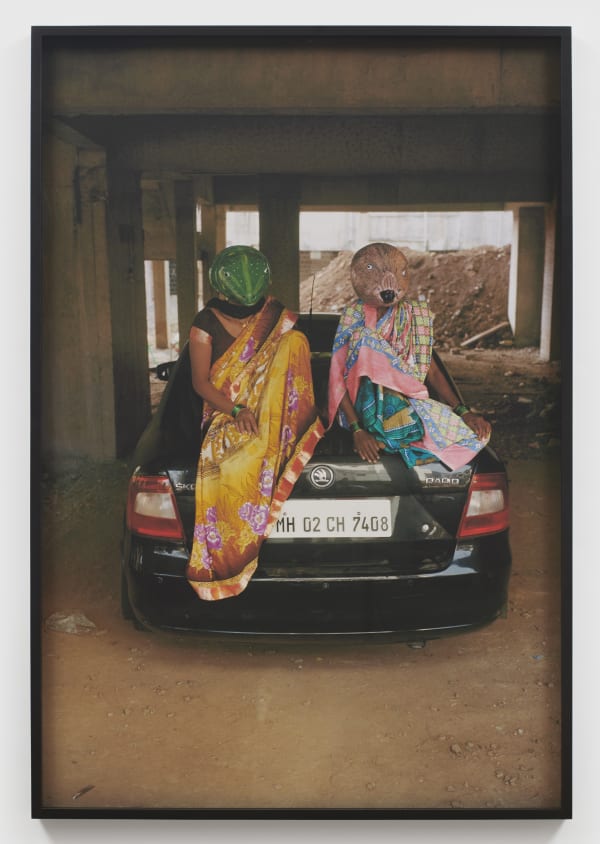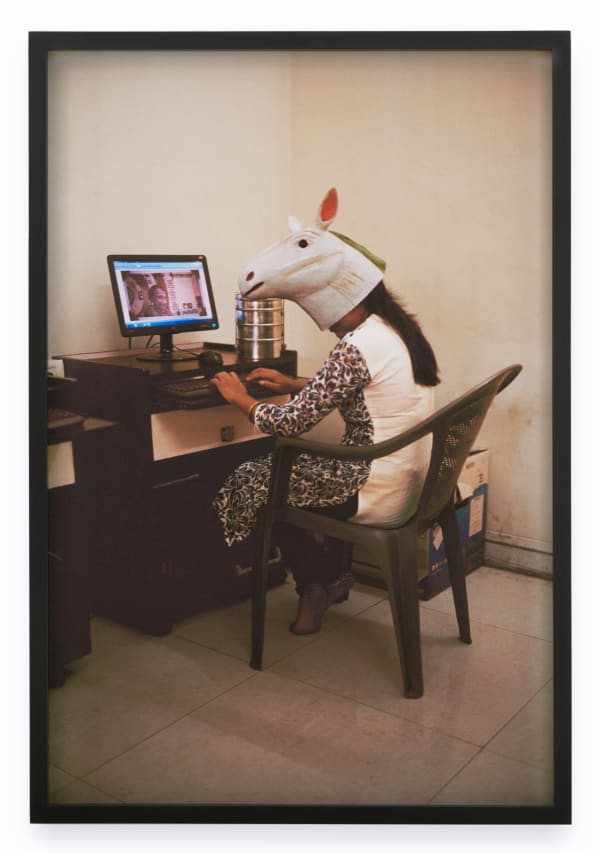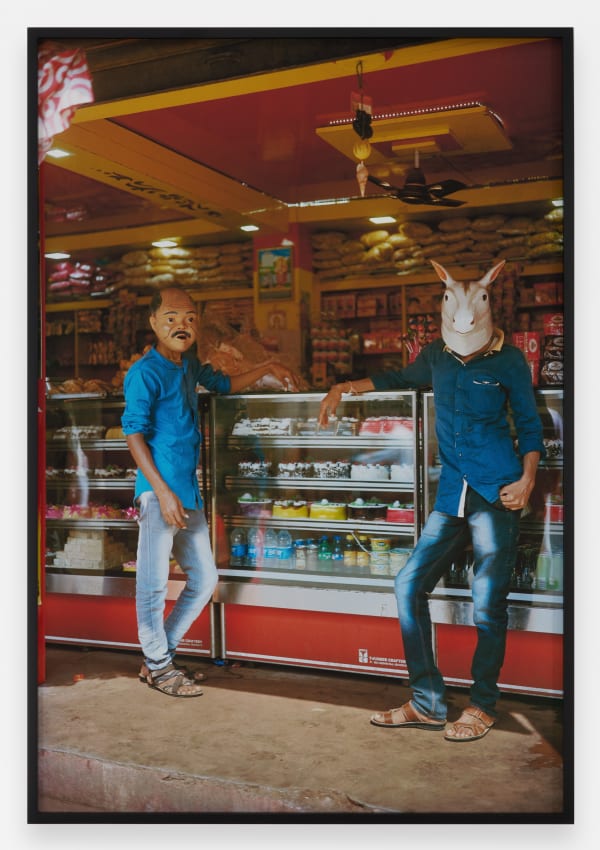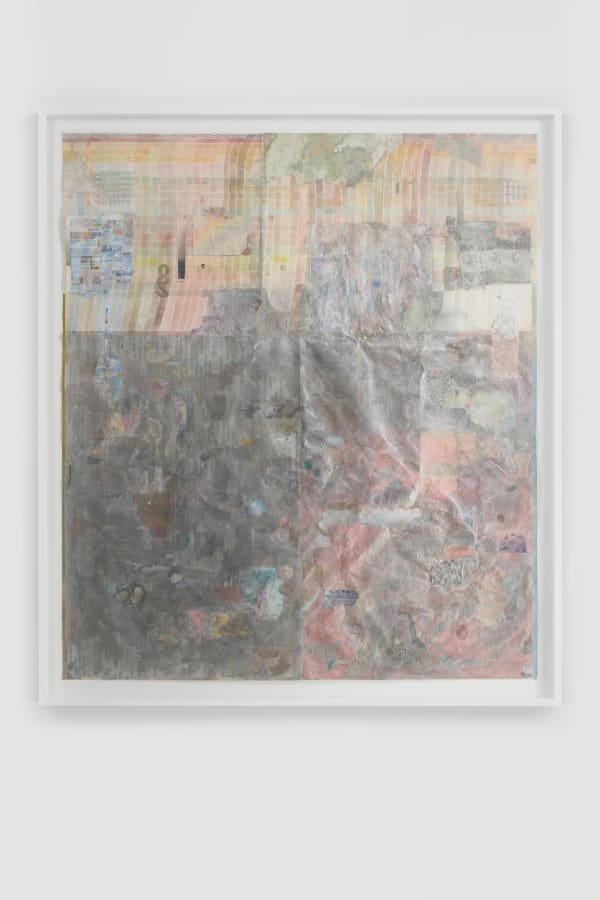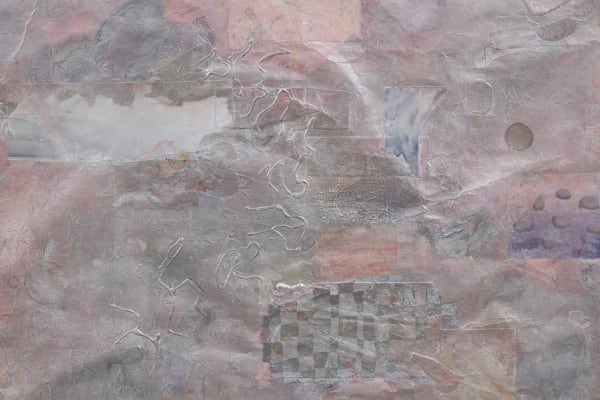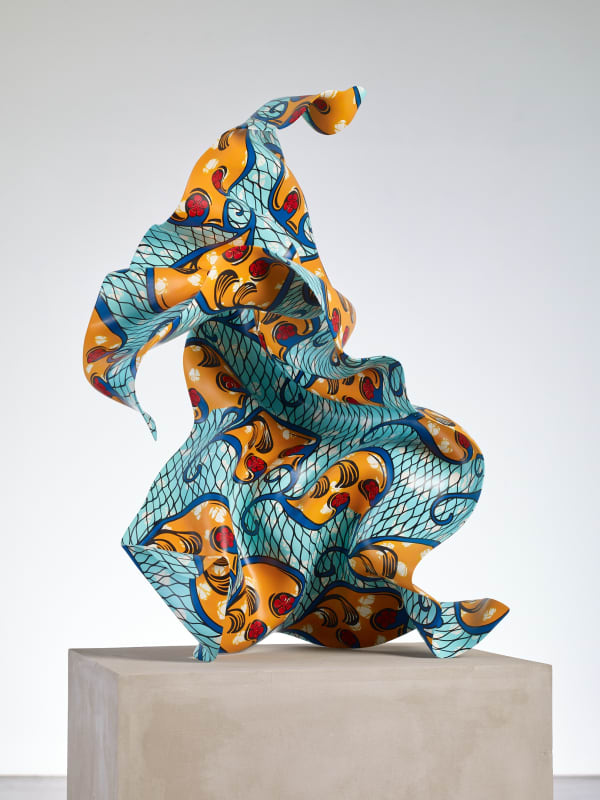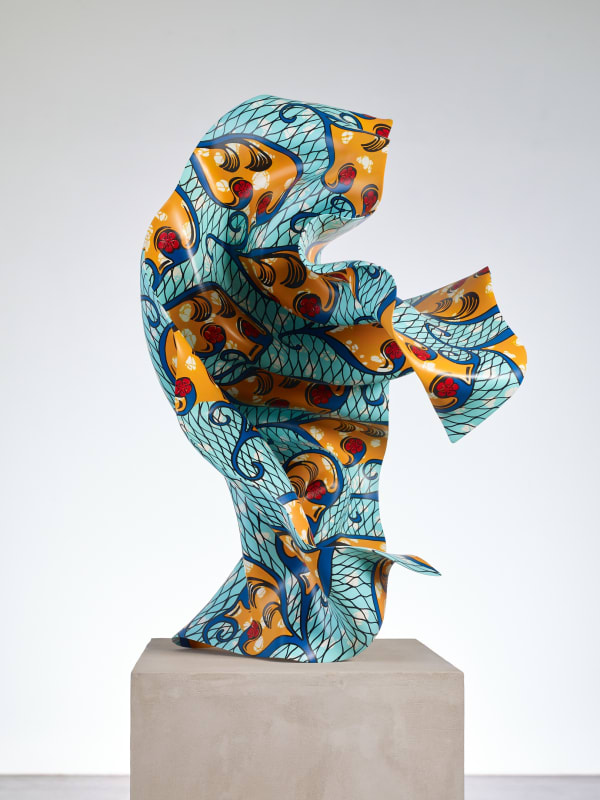-
For the 2022 edition of FOG Design + Art, James Cohan will present a selection of new and important work by Simon Evans™, Gauri Gill, Josiah McElheny, Christopher Myers, Yinka Shonibare CBE, Elias Sime, and Grace Weaver. The fair is open to the public from January 19th to the 23rd at Fort Mason in San Francisco.
Preview available works ahead of the fair in our Viewing Room.
-
Elias Sime
-
Elias Sime deftly weaves, layers and assembles materials into abstract compositions that suggest topography, figuration, and sublime color fields. The history of his materials hold meaning, as they are the backbone of all communication systems, whether they be telephone or computer. They suggest the tenuousness of our interconnected world, alluding to the frictions between tradition and progress, human contact and social networks, nature and the man-made, and physical presence and the virtual.
-
Christopher Myers
-

-
I Dare Not Appear is an ongoing project of appliqué textile works inspired by a collection of historical letters written by Sarah Forbes Bonetta, a young Egbado girl who lived in Victorian England, that now belong to the artist's family. Much of Forbes Bonetta’s early narrative is parsed through Captain Frederick E. Forbes’ book Dahomey and the Dahomans, published in 1851. Captain Forbes was “bequeathed” Sarah Forbes Bonetta by King Ghezo of Dahomey, who intended the child as a gift for Queen Victoria.
The works presented at FOG depict moments of Dahoman rituals and customs drawn from Forbes’ memoirs.
Collectively, the tapestries in I Dare Not Appear exemplify the artist’s deft hand in translating histories gleaned through careful research into evocative material form.
-
Gauri Gill
-
For nearly two decades, Gauri Gill has investigated the interplay between obscurity and power through her images of daily life in rural India. Gill has established herself as a force in the photography field, shaping a new image of life in India. Her photographs unearth acts of resilience by honoring her subjects in vernacular moments and moving the spotlight away from the media’s one-dimensional portrayal of oppression, the struggle for education, healthcare and land issues faced by India’s rural and indigenous communities.
In 2015, Gill began collaborating with papier-mâché artists of the Kokna and Warli tribes in Maharashtra, renowned for their sacred masks. In this series Acts of Appearance, she invited her collaborators to go beyond the confines of their traditional mask making and develop a new set of forms. Through these vibrant color photographs, Gill tells fictional stories improvised with her collaborator-subjects as they engage in everyday village activities while inhabiting new masks, recalling animals, humans and revered objects that they made expressly for this body of work. The resulting images vacillate between reality and otherworldliness, unfolding in a range of symbolic and sometimes playful scenarios all situated within the backdrop of the surrounding village.
-
Simon Evans™
-
Simon Evans™, the artistic collaboration between Simon Evans and Sarah Lannan, is known for dense, text-based collages saturated with short, poetic phrases, drawings, and images often created from the detritus of everyday life both inside and outside of the studio. These works reflect their long-standing interests in concrete poetry, surface treatment, personal branding, and memory and historical narrative, both individual and collective.
In Feeling Great, they pare back their characteristic density of language to create a work of delicate beauty that celebrates the process of making and the more traditional techniques and materials they have begun to embrace. Swaths of Japanese watercolor are overlaid with collaged elements and embedded with silver powder dust. This gilding of the surface serves to capture a fleeting moment and monumentalize it. For Evans and Lannan, who often employ gold and silver leaf in their compositions, its use implies a consideration of both the material’s elemental qualities and its historical use in art and architecture.
-
Yinka Shonibare CBE
-
As with the artist’s series of public, outdoor Wind Sculptures, Yinka Shonibare's Material sculptures continue to explore and play with the notion of harnessing motion and freezing it in a moment of time. Sized on a domestic rather than monumental scale, the Material series is made in bronze, which is then hand-painted to look like a batik fabric blowing in the wind. Through this series, the artist pushes the formal boundaries of both batik fabric and bronze by creating objects that appear flexible and delicate but are in fact solid and immutable.
Shonibare says of his works dealing with motion, "I am trying to do the opposite of sculpture—to sculpt the impossible. I am interested in making the movement of the wind visible through a sculptural form. Most of us move around the world, if you fly, there is wind involved, and if you come by boat, there is wind involved,” Shonibare continues, “These sculptures are a metaphor for the natural movement of people. Migration."
-
-
Available Works
-
 ELIAS SIME, Tightrope, 2021
ELIAS SIME, Tightrope, 2021 -
 ELIAS SIME, TIGHTROPE: ECHO!?, 2021
ELIAS SIME, TIGHTROPE: ECHO!?, 2021 -
 CHRISTOPHER MYERS, Lusanga (formerly Leverville), 2021
CHRISTOPHER MYERS, Lusanga (formerly Leverville), 2021 -
 CHRISTOPHER MYERS, The Platform of the Ah-Toh, 2021
CHRISTOPHER MYERS, The Platform of the Ah-Toh, 2021
-
FOG Design + Art
Past viewing_room

